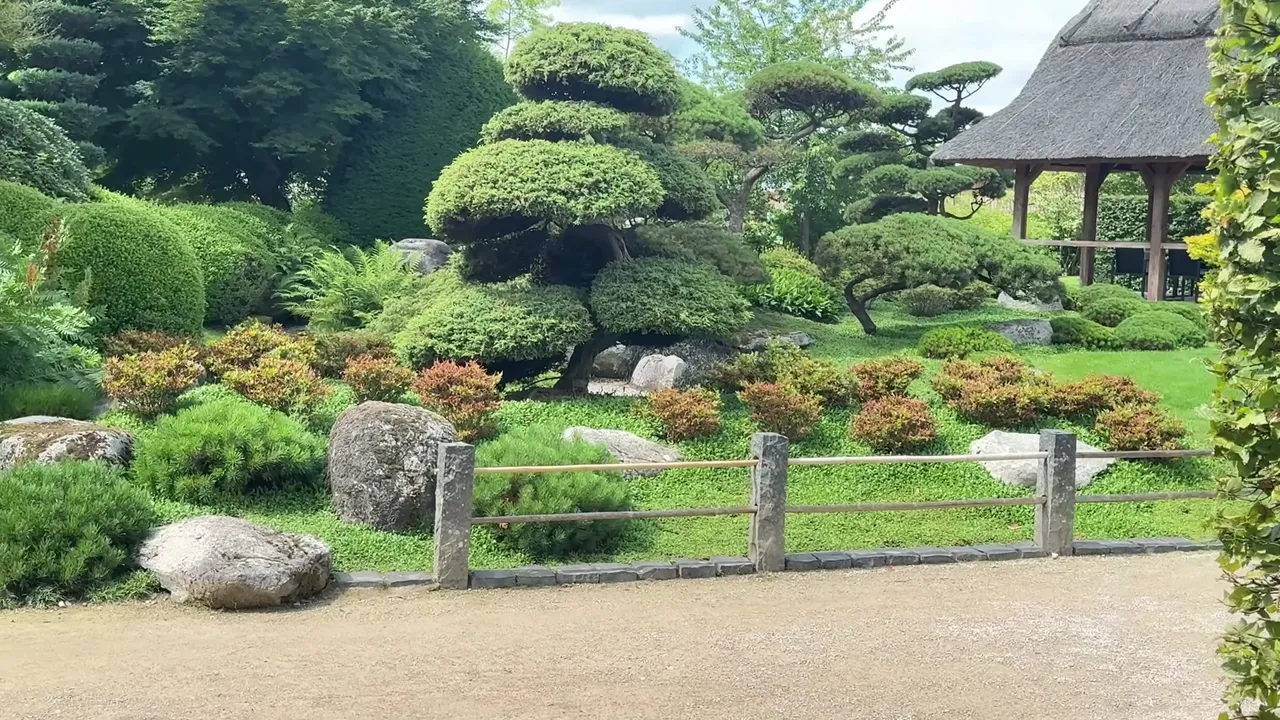
Visiting botanical parks always feels like a holiday to me, as if I am stepping into a fairytale. Today we will take a look at the flower-filled show gardens of the Park der Gärten in Bad Zwischenahn, Lower Saxony.
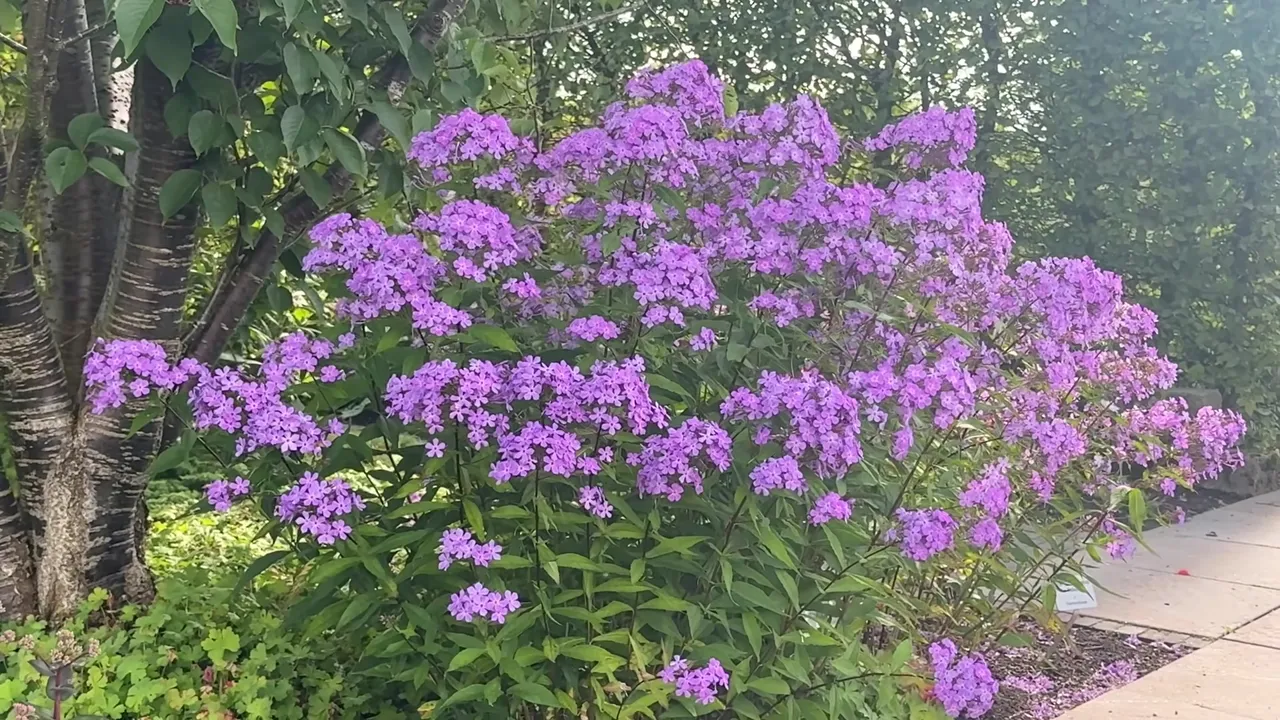
Our first stop is the phlox garden, tucked behind a water feature. Living hedges have been used here to separate the garden rooms. Potted plants are arranged throughout the park and the flowers change with the seasons.
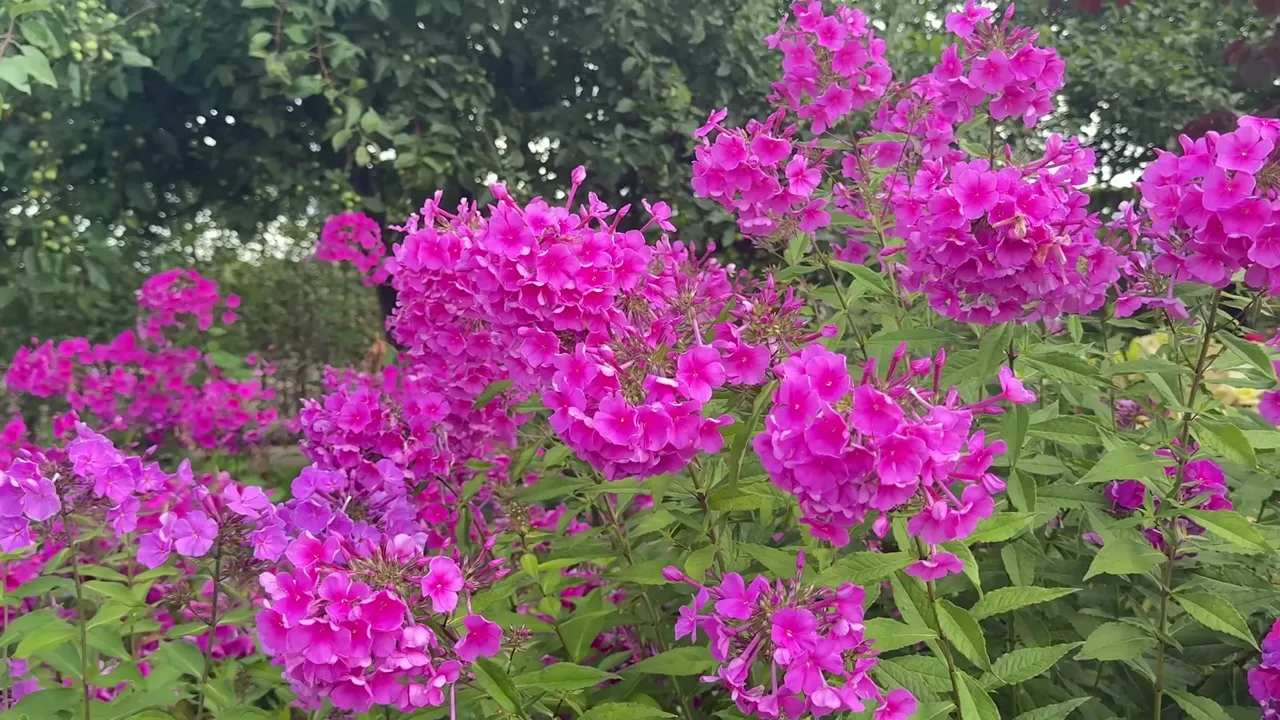
With its vibrant colors and fragrance, the phlox garden is the most poetic corner of the park. Paniculata phloxes of different colors, heights and blooming times are planted together.
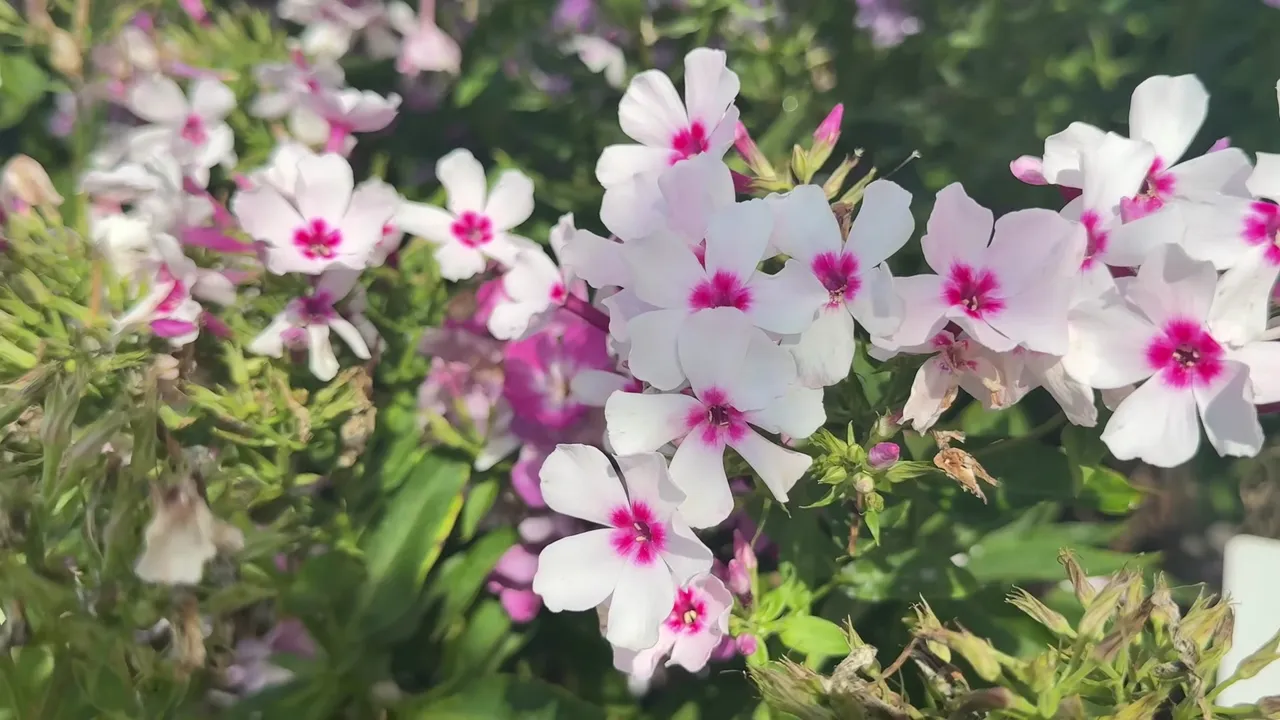
At the entrance path, plants grow between the stone pavings. Slight height differences and display furniture add movement to the garden.

Near the phloxes, there are Clawson cypress, magnolia and Weigela Alexandra. Since the phloxes are planted alongside other perennials, they create a natural look.
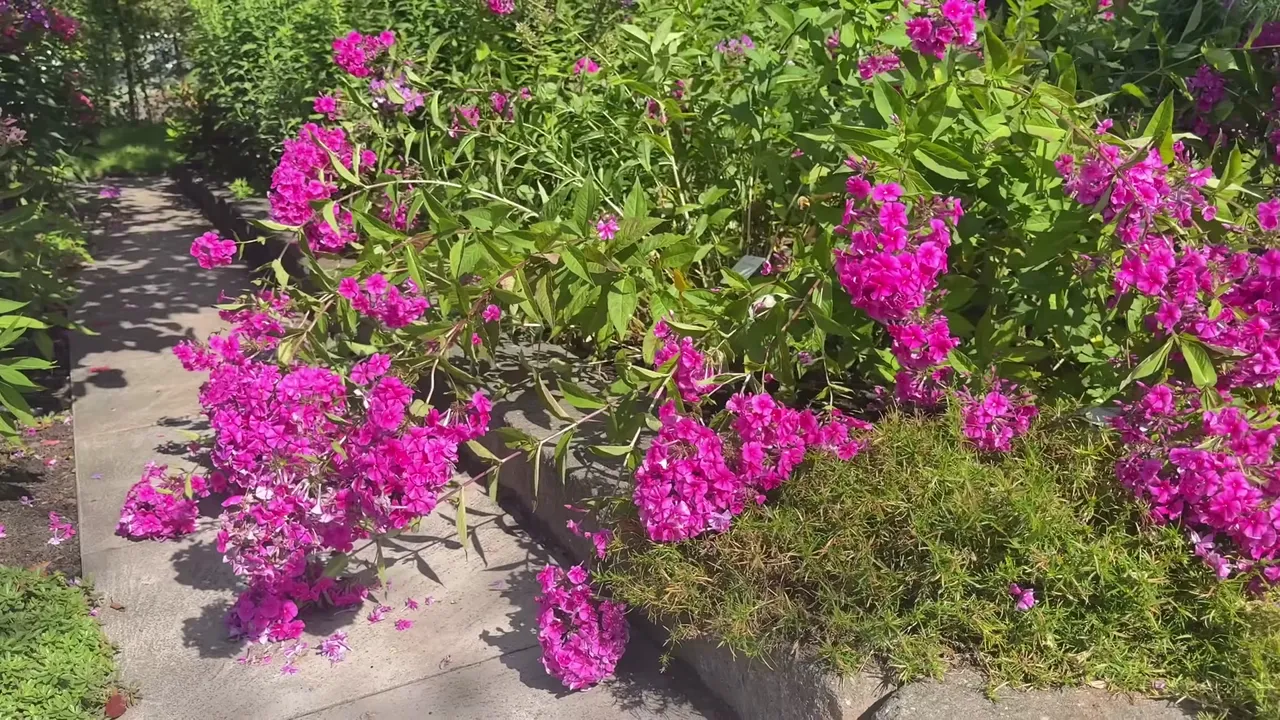
Next to the Cercis Forest Pansy stands the tallest and brightest phlox variety, Vnet. Flame White phlox combined with daylilies provides a lovely harmony of colors.
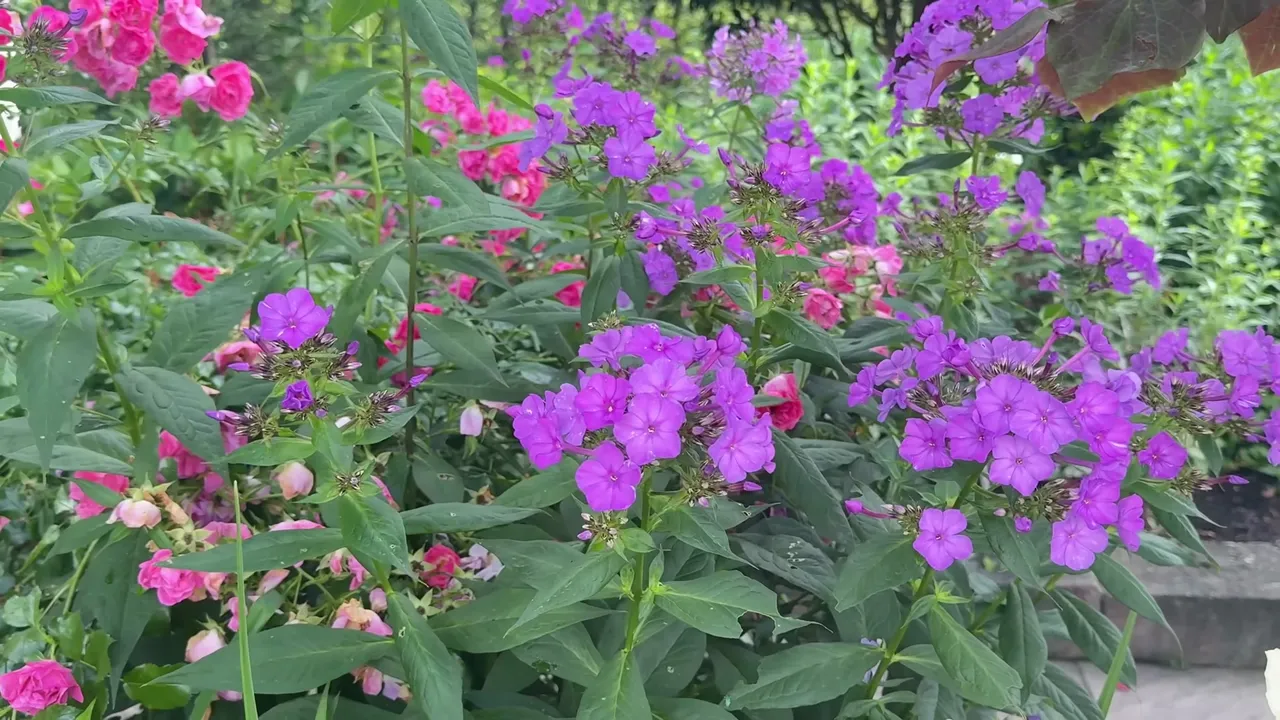
The Eideraum rose and various types of phlox attract attention here. Because of their staggered blooming periods, the garden remains lively.
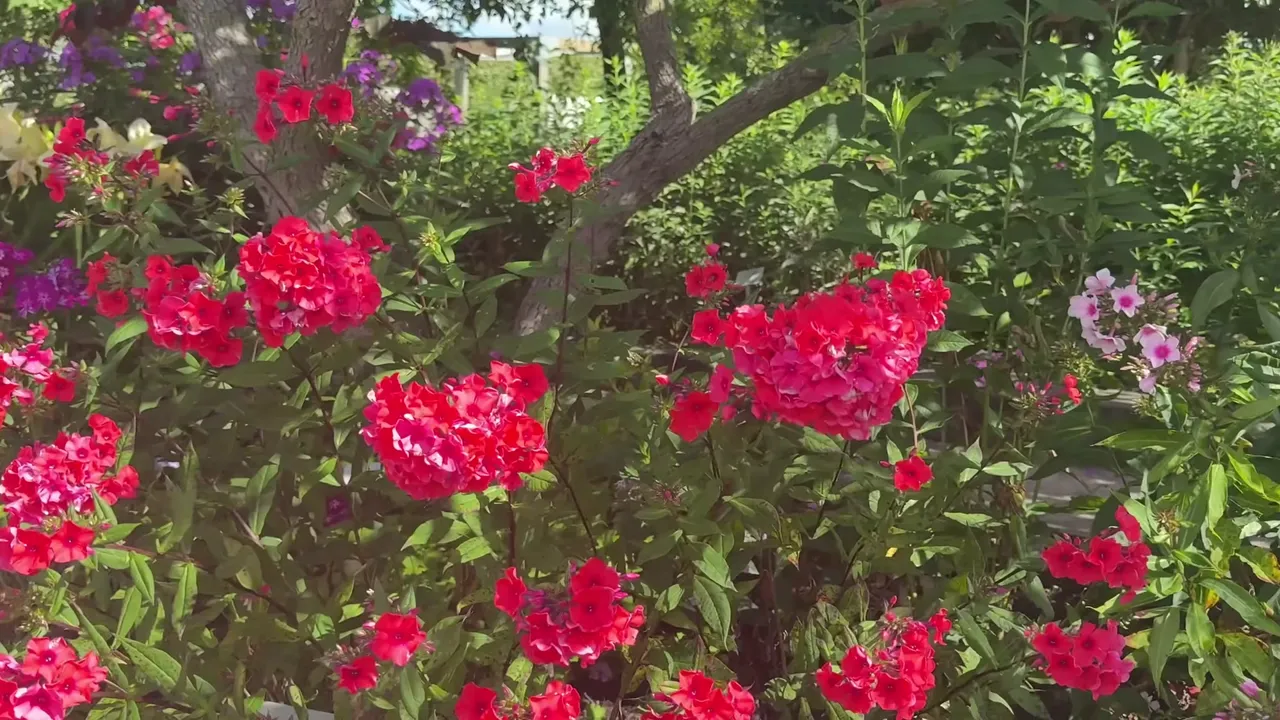
Gypsophila Rosea and Geranium Cambridge look charming between the stones. Rhododendrons and boxwoods add a natural touch.
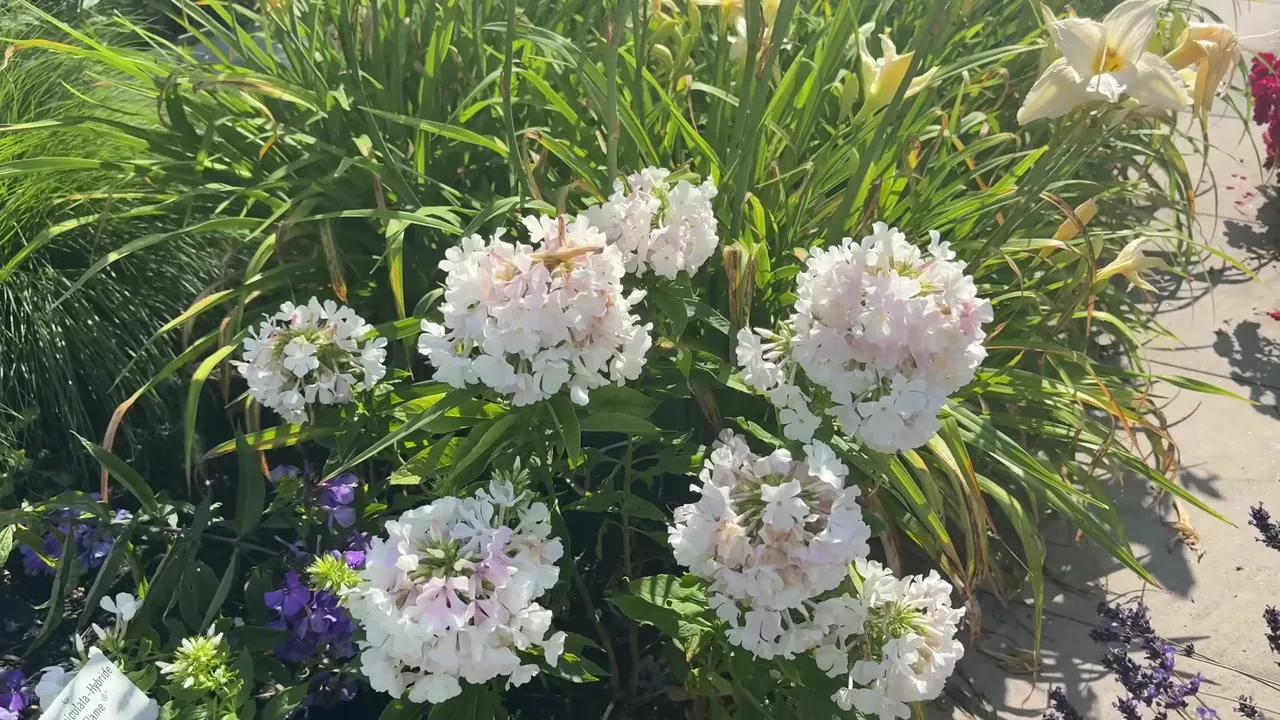
When I visited in spring, it was not this vibrant. Now the phloxes are at their peak. The blooming wave of standard roses has passed. The Audience variety is also here.
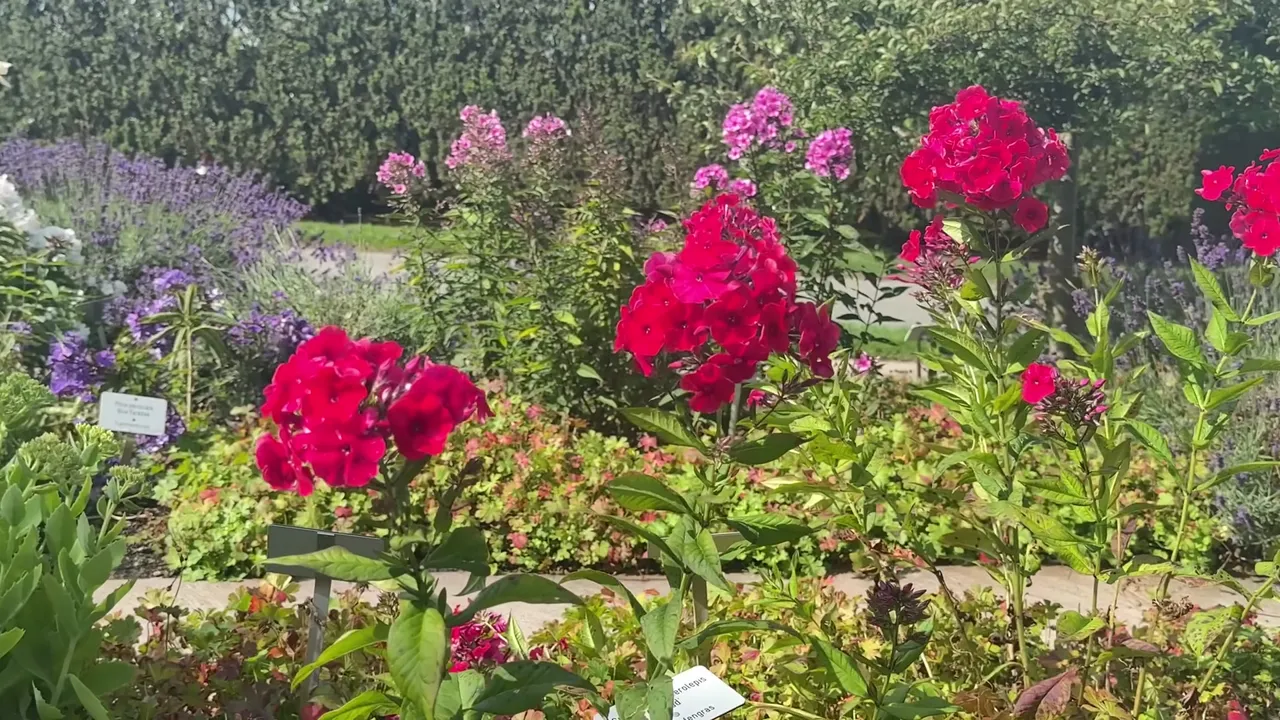
I admired the different types of thistles once again. The ground-covering ones stand out with their unique appearances.
Along the path, geraniums are used as ground cover among the phloxes. Sedum Autumn Joy also blends nicely with them.
The ornamental grass Malinia Moorhexe pairs well with the phloxes. Blue Paradise phlox, Hitcot Blue lavender and the miniature apple tree Tina make a great combination. Balu floribunda rose, Carfunkelstein sedum, lavender and daylilies form a lovely trio. Fotergilla gardenii and short-stemmed gauras have found their place here as well. The Leonardo da Vinci rose, a spreading hazel species and my favorite burgundy-leaved plant looked truly striking. Insect-friendly living hedges are popular in gardens today. Some aquilegias and even a few wild plants have also taken root. The Butonik paniculata phlox stands out with its distinct flower shape.
In the shaded area, Japanese anemones Overture and Prens Heinrich grow. It might be better to cultivate them in a limited space.
And so we finish our walk through the phlox garden.
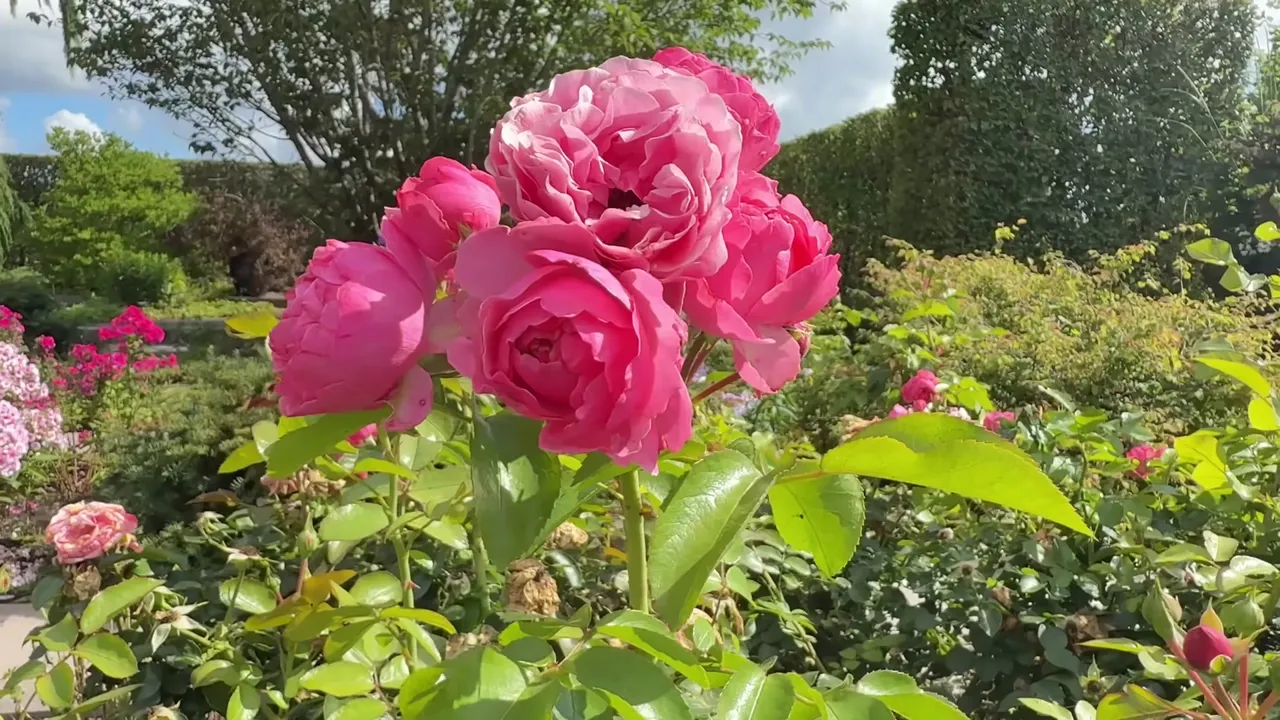
I wish you all inspiring and peaceful days ahead.